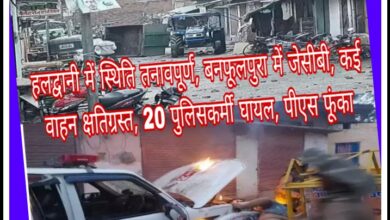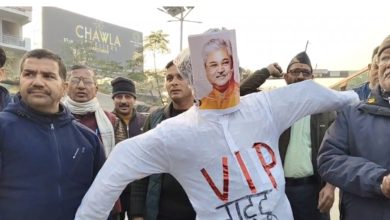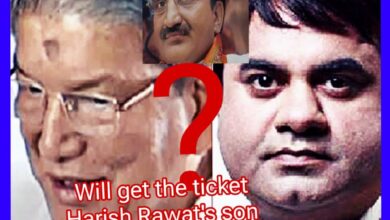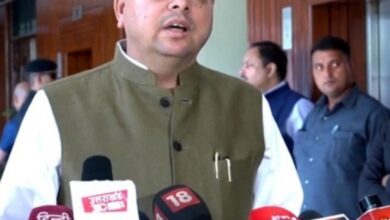Credit goes to Balbhadra Singh Negi, founder Garhwal Rifles, for his very first initiative to bring motorable road to Dugadda in 1905
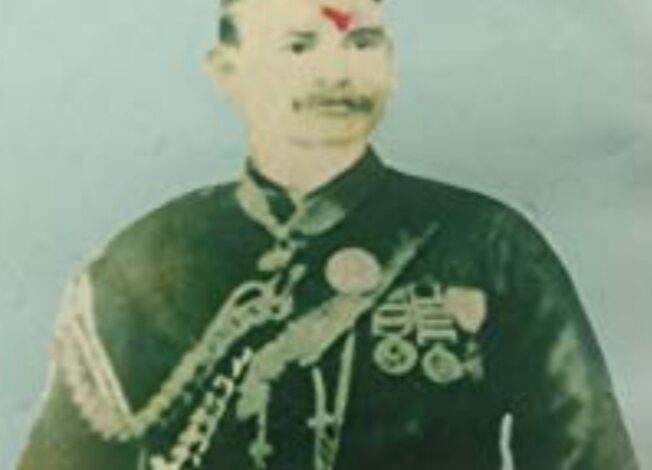
There is an interesting story of a motorable road arriving in Garhwal, Uttarakhand for the very first time in the year 1905 at the behest of none other than the founder of Garhwal Rifles, the then Laat Saab, a prestigious title given by the British to Balbhadra Singh Negi who originally hailed from Kaljikhal block. It was here that about 15 thousand curious inhabitants had gathered at Dugadda Pauri Garhwal to see the first vehicle of an affluent businessman Motiram that reached here with several sacks of jaggery, grams ( chana), salt etc.
A story in Hindi, being circulated in social media under the title “The history of roads in Garhwal”, is an interesting piece to go through which UKnationnews thought to publish for the readers interest.
It is interesting to note that in 1887, a squad of Gorkha Rifles has reached Lansdowne from Ranikhet on foot, marching towards Kaalodaanda fully dressed in uniform marking pathways.
It was in the same year that Garhwal Rifles was founded in Lansdowne with Britishers initially functioning from tents, finding it as a most lovable destination.
The then viceroy of India Lord Lansdowne at the request of Balbhadra Singh Negi ADC ( laatsaab), on the recommendation of Robertson, the then Commander in chief of British Army founded the Garhwal Rifles and converted Kaalodaanda into Lansdowne Cantonment , its headquarter.
Decorated with the prestigious post of ADC to Viceroy Lord Lansdowne, Bhalbhadra Singh originally belonged to Hedakholi village in Kaljikhal development block of Pauri Garhwal.
After his retirement, a gentleman to the hilt and fully embedded in spiritualism, God fearing Balbhadra Singh Negi in addition to founding the Garhwal Rifles in 1887 is also credited for bringing the first motorable road to Dugadda, Garhwal from Kotdwar constructed not through any private contractor but through Garhwal Rifles group who also built a Durgadevi temple here.
At the behest of Balbhadra Singh Negi, ADC, a prosperous businessman of Kotdwar, Garhwal Surajmal has extended his immense help n support to this road project.
When this very first road was constructed till Dugadda from Kotdwar, the first vehicle loaded with sacks of jaggery, salt, grams, pulses etc reached here with curious fifteen thousand people gathered to watch it.
This development was like their dreams come true as never before in their lifetime had the locals saw a vehicle in their vicinity.
Thereafter, it was in the year 1909 that this road was extended to Lansdowne, an unbelievable development at the height of 1,780 metres.
The extension of this motorable road led to tremendous convenience to the inhabitants of Badalpur, Talla, Malla to Raath area ( Bironkhal block) who used to earlier walk on foot for days together to fetch eatables n grains, spices, jaggery, salt, oil etc on pony backs for villagers on uneven temperory pathways full of potholes etc.
During those days, the inhabitants of Bironkhal block used to go to Ramnagar Mandi via Sarainkhet n Marchula finding it more convenient than to reach Dugadda as there was no motorable road. But after the arrival of road to Lansdowne, reaching Dugadda n Kotdwar for fetching household articles, became an easy short time affair.
According to some senior citizens who are witness to the British era in Garhwal, while the motorable roads had arrived till Satpuli in 1925- 26, but the commoners were not allowed to travel in vehicles.
Only the officers of British origin of Garhwal Rifles and Pauri Commisionary used to reach Satpuli by trolley or lorry motors from Lansdowne etc.
From Satpuli to Pauri, these officers used to ride on Ponies via special pony tracts via Banghat, Bilkhet, Dadukhal, Kanskhet and Adwani to Pauri. These pony pathways were specially prepared for the British officers as there was no motorable road beyond Satpuli, then.
Only British officers, their helpers and revenue officials were allowed to ply on these pony roads. The common people used to ply on another uneven pathways, especially those involved in petty business up to Tibet.

Several years after, by virtue of tremendous efforts n hard work, in the year 1932, a strong wooden bridge was erected on the flowing river at Satpuli and a road built covering Baunsal, Amotha, Pastisain, building another bridge over a stream flowing adjacent Jwalpadevi temple further connecting Jwalpa, Jakheti, Agrauda, Paidul, Parsundakhal areas of Garhwal nearing Pauri township and finally to Ghodikhal.
Thereafter, finally the motorable road reached Pauri via Bubakhal, earlier being the stable of horses of the British. It was for the very first time that the motor lorry of Pauri Commissioner Mr. Kambot plied on this road. This was primarily the Lorry of Garhwal Rifles.
However, despite the road till Pauri having been completed before independence from foreign yoke, the commoners were only allowed to walk on this road. The so called reputed citizens like Britishers, english officers, those decorated as Rai Bahadur Rai Sahibs by the British, Tehsildars, Kanagoos, the rich, landlords etc were exclusively allowed to travel on their horses etc. However, The motor vehicles didn’t ply on this road for years.
Fortunately in the year 1942 the British administration allowed the Garhwali businessmen n even common citizens to ply their vehicles on this road.
This enthused the ultra rich of Garhwal, Dugadda, Moti Ram, proprieter of a vehicle and Surajmal of Kotdwar who jointly bought a lorry/ vehicle and plied for the first time on Kotdwar, Satpuli, Pauri motorable road driven by a villager of Payasu village of Kapolsiun patti. Hundreds of the curious locals came to see this motor for the very first time at various stops garlending the driver and owners Jubilantly.
According to the senior citizens, witness to all this, when after two days of travel, the vehicle reached Agroda, about twenty kilometres from Pauri township, a woman kept grass n water in front of it thinking that the vehicle might be hungry after two days of travel. Such were the villagers, innocent n illiterate then, having never seen a motor during their entire life time.
It may be recalled that on 30 th December 1815, the then King of Tehri Kingdom had declared Tehri as his Capital shifting from Srinagar, after the then British Army ousted cruel Nepalese soldiers who had let loose their reign of terror in Srinagar Garhwal.
The British under the Singhaoli pact was given the Pauri Garhwal area and Tehri Garhwal retained by Tehri Rajshahi, ( Kingdom).
The Pauri Commissionery under the British was founded in 1815 with WG Trail named as its first Commissioner. Batton Beffet was thereafter appointed the Commissioner of Pauri Garhwal Commissionery. After Batton Beffet, Henrey Remje took charge who was commissioner of Garhwal and Kumaon Commissionery from 1956 to 1884.
Thereafter Colonel Fisher, Kambot, n Paul were it’s commissioners with Paul being the last one.
In 1941, Commissioner Kambot, granted permission to form the Garhwal Motor union comprising of thirty buses owned by different owners privately.
As a result a motor union was formed under Motor vehicle act of 1940, section 87, now converted as Motor union act 1988, section 87.
Unfortunately, in the year 1951, on 14 th September about 22 buses were drowned in the heavy floods of Satpuli’s ferocious monsoon river.
About thirty bus conductors and drivers lost their lives in this deluge. Among those died in this tragic deluge was also the first driver of lorry who drove his vehicle till Pauri for the very first time on motorable road namely Kundan Singh Bisht of village Chindalu, Patti Kapolsiun, Pauri Garhwal.
It may be recalled that founded in 1887 at Lansdowne earlier known as Kaalodanda, situated at 1780 metres above sea level, on the request n initiative of ADC to Lord Lansdowne on the recommendation of the then Commander in chief Robertson, Garhwal Rifles is an infantry regiment of Indian Army, raised as 39 Garhwal Regiment of Bengal Army, by the British.
Incorporated in India Army after independence the Garhwal Rifles comprised of over 25000 dare devils, having fought the Kargil war bravely n winning Victoria crosses twice in World wars.
The battalion has, to it’s credit receiving an immediate award of the COAS’ Unit Citation, in all winning six Vir Chakras, a Bar to the Sena Medal, seven Sena Medals, seven Mentioned-in-Despatches and the Battle Honour ‘Dras’. Both Battalions were awarded Theatre Honour ‘Kargil’.
Picture : Amazon

